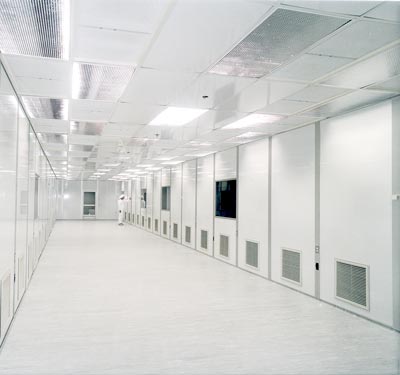- myT3 Corporate Account
- your Environment
- Wipes, Cloths & Absorbents
- Swabs & Applicators
- Abrasives & Finishing Systems
- Equipment Protection
-
Environment Control
- AkiMist Dry Fog System
- Curtain Wall Partitioning Systems
- Dycem Contamination Control Systems
- ESD Systems
- Fan & Filtration Covers
- Grate & Jig Cleaning Systems
- Lighting Systems
- Power Washers
- Tacky Contamination Control Mats
- Tacky Mesh Airborn Particulate Control
- Tacky Wall & Floor Protection
- Wall & Floor Cleaning Systems
- Wall, Floor & Oven Maskings
- Protective Gear
- Janitorial Supplies
- Restaurant & Bar Supplies
Cleanroom Classification Standards

Cleanrooms are generally used for environmentally sensitive processes such as pharmaceutical production, culture study, or microprocessor manufacturing where even the slightest amounts of dust or other particles can disrupt the entire process. These rooms are rated by the amount of particles allowed per cubic foot, (or meter depending on the scale), and are distinguished by class. Particle sizes are measured in microns, a micron being comparable to 1/100 the width of a human hair.
Particle concentration goes up as clean room classification goes up in number. As cleanroom classification goes up in number, the environment is less strictly regulated. Different types of applications require different levels of regulation and particle concentration for their cleanroom systems. For example, a class 100 cleanroom is much cleaner than a class 100,000 cleanroom.
For many years the Federal Standard 209E was the de facto standard in which all cleanrooms were based. Simply put, the classes associated with 209E were directly related to the amount of particulates in the air. For example, a Class 100 cleanroom air sample would produce no more than 100 particles (larger than or equal to .5 micrometers) per cubic meter of air.
The 209E standards expired in 2001 and the new ISO 14644 standards were put into practice. The reason for the change was to switch from the American standard of measurement to the metric system. The ISO standards are very similar, although the scale is different ranging from 1 — 9 (nine being the highest) and based on an ascending logarithmic scale. For example cleanroom samples with no more than ten particulates (no larger than .1 micrometers) per cubic meter of air, would be considered ISO 1.
Here is an informative chart comparing 209E and ISO 14644:
| Class | .1 um | .2 um | .3 um | .5 um | 1 um | 5 um |
| 1 | 10 | 2 | ||||
| 2 | 100 | 24 | 10 | 4 | ||
| 3 | 1,000 | 237 | 102 | 35 | 8 | |
| 4 | 10,000 | 2,370 | 1,020 | 352 | 83 | |
| 5 | 100,000 | 23,700 | 10,200 | 3,520 | 832 | 29 |
| 6 | 1,000,000 | 237,000 | 102,000 | 35,200 | 8,320 | 293 |
| 7 | 352,000 | 83,200 | 2,930 | |||
| 8 | 3,520,000 | 832,000 | 29,300 | |||
| 9 | 35,200,000 | 8,320,000 | 293,000 |
| ISO Class | American Measurement | Metric System |
| 1 | ||
| 2 | ||
| 3 | 1 | M1.5 |
| 4 | 10 | M2.5 |
| 5 | 100 | M3.5 |
| 6 | 1,000 | M4.5 |
| 7 | 10,000 | M5.5 |
| 8 | 100,000 | M6.5 |
| Class 100,000 | ISO 8 | M 6.5 | Requires 10 - 20 air changes per hour* |
| Class 10,000 | ISO 7 | M 5.5 | Requires 30 - 70 air changes per hour* |
| Class 1,000 | ISO 6 | M 4.5 | Requires 70 - 160 air changes per hour* |
| Class 100 | ISO 5 | M 3.5 | Requires 40 -100 feet per min.** (400 to 480 air changes per hour*** |
| Class 10 | ISO 4 | M 2.5 | Requires 60 - 100 feet per min.** 540 to 600 air changes per hour*** |
| Class 1 | ISO 3 | M 1.5 | Requires 60 - 100 feet per min.** 540 to 600 + air changes per hour*** |
*= Nonunidirectional dilution airflow for 9' high Class 100,000 to Class 1,000 cleanrooms
**= Unidirectional displacement airflow for Class 100 to Class 1 cleanrooms
***= Estimated Rule of Thumb for 9' high cleanrooms






